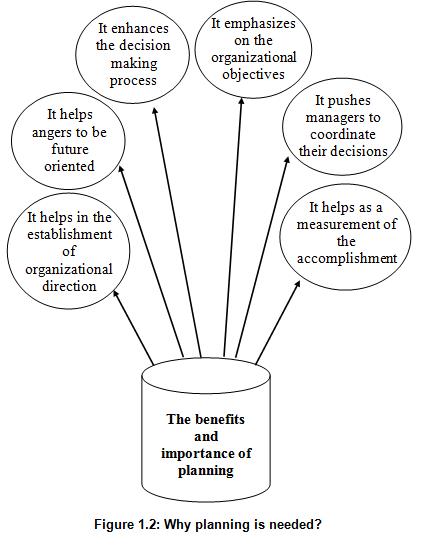1.2.4 Factors that may Make Planning Effective
The research data indicate that under most circumstances planning is a positive force for organizational goal attainment. It is also true that a great many chief executives of large corporations view it as important. However, there are many factors that may make planning effective, among them:
a) Effectively done, planning can contribute to reduced role ambiguity and role conflict. When policy planning has been carried out, and clear role prescriptions have resulted, individuals are more likely to know what they are supposed to do and the probability that conflicting forces will push them in two directions at once is considerably reduced.
b) Closely allied to the first point, effective planning tends to limit arbitrary actions by individual superiors.
c) Because role prescriptions are the ultimate result, planning leads to a reduction of uncertainty within the organization.
d) Planning produces a greater capacity to deal with uncertainty in the environment external to a company, as well as internal uncertainty. Effective planning makes it much less likely that a company will be caught off guard and suffers accordingly. Thus positive adjustment to a sudden shift in market demand is much more likely if such a shift has been forecast and new role prescriptions established for dealing with this contingency.
e) The very process of planning tends to lead to decision making that deals with more factors and takes more considerations into account. Systematic planning requires a look at a long list of variables which might influence events. Without such a systematic consideration of influences and alternatives, the likelihood that something of importance will be overlooked is very high. Thus, planning by its very nature tends to force a manager to take into account factors that might not otherwise be considered, and to tie plans more closely to operative goals involving both task and maintenance.
f) Planning is important in that it contributes to the performance of other management functions. Typically the tie between planning and control has been emphasized, as shown in Figure 1.2.
